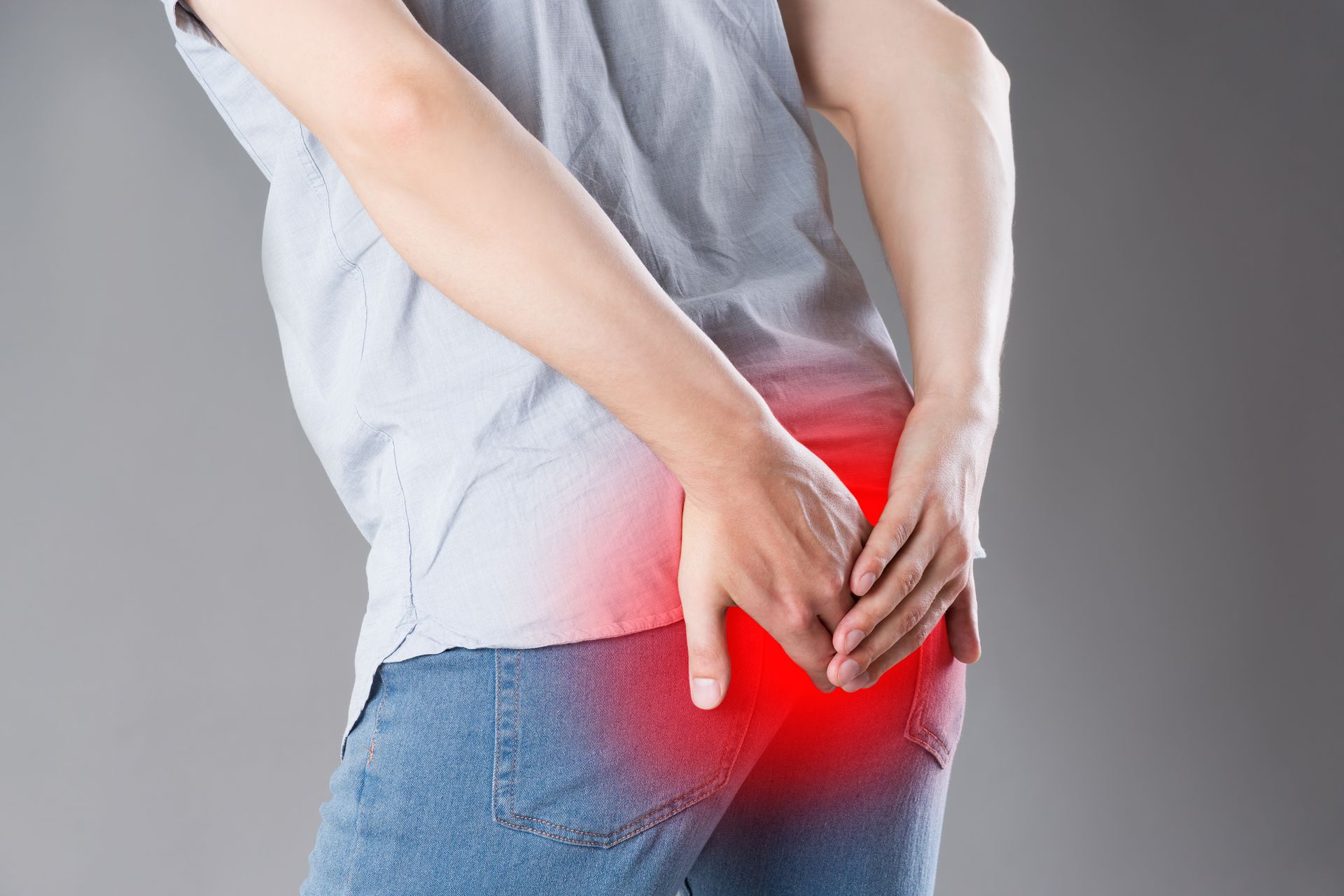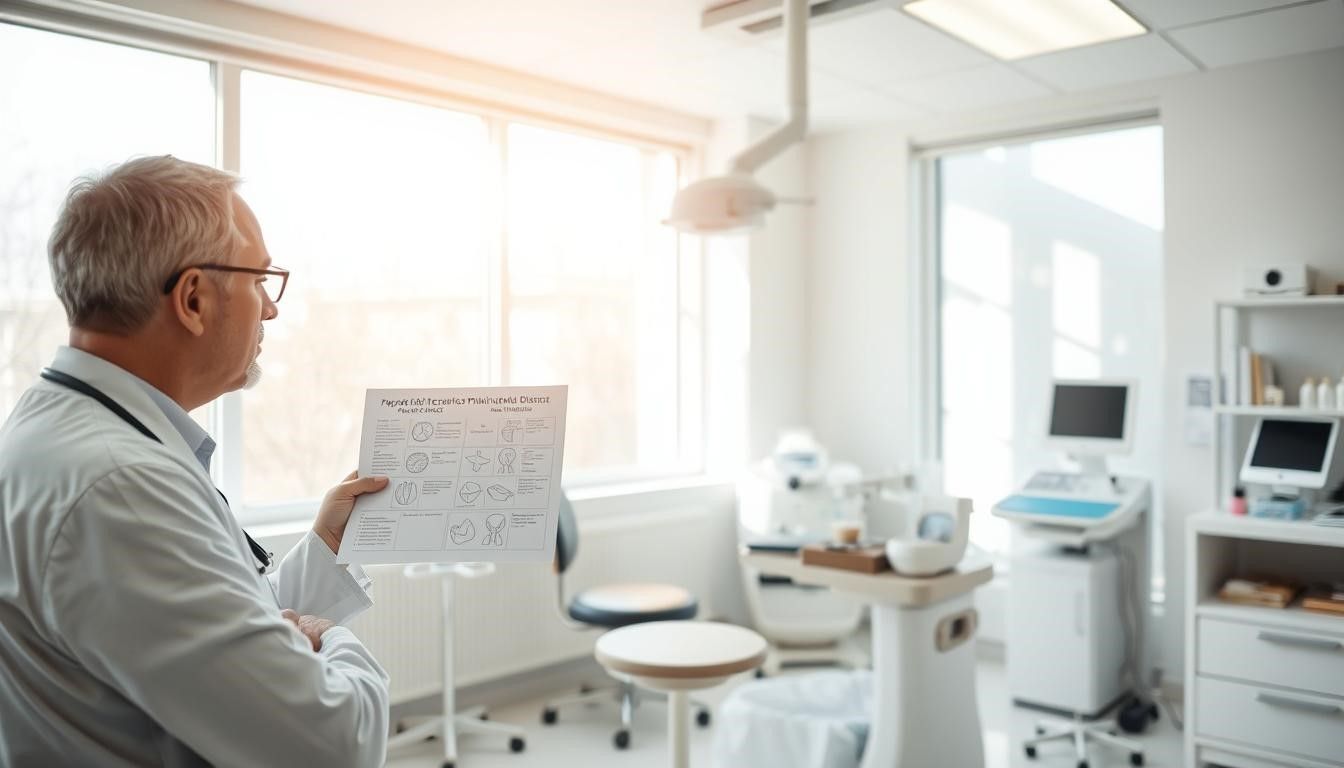Understanding Pilonidal Recurrence - Why it Happens and How to Prevent It
Dealing with pilonidal disease can be frustrating, especially when it keeps coming back. Many people struggle with this condition returning even after treatment.
At Pilonidal Fix, we specialize in helping patients achieve lasting recovery. We're the only dedicated practice in the Northeastern US focused exclusively on this condition.
Dr. Rafailov provides expert care with compassion and direct communication. His approach combines medical excellence with genuine patient understanding.
This condition affects about 26 out of every 100,000 people. Men are three times more likely to develop it than women.
Many people have asymptomatic pilonidal sinuses without even knowing it. Studies show approximately 6.6% of people may have undetected cases.
Understanding why recurrence happens is the first step toward prevention. Proper treatment and aftercare make all the difference for long-term success.

Key Takeaways
- Pilonidal disease often returns even after initial treatment
- Specialized care significantly improves long-term outcomes
- Men are three times more likely to develop this condition
- Many cases go undetected without symptoms
- Expert treatment combined with proper aftercare prevents recurrence
- Direct communication with your doctor ensures better understanding
- Comprehensive approaches lead to higher success rates
What is Pilonidal Recurrence?
When a condition you thought was resolved returns, it can feel like a major setback. This is exactly what happens with pilonidal disease coming back after treatment. Understanding this phenomenon is crucial for effective management.
Medical experts define recurrence using specific criteria established by research. These include surgical re-intervention, new sinus formation, visible hair in openings, pus discharge, or combinations of softer signs.
The Challenge of a Returning Condition
Facing the same health issue multiple times creates emotional and physical strain. Patients often experience frustration and anxiety when symptoms reappear.
The timeline for recurrence varies significantly. Research shows 75% of cases happen within the first five years after surgery. However, some patients experience return of symptoms up to 22 years later.
Proper diagnosis is essential to distinguish this condition from similar issues. Conditions like hidradenitis suppurativa or perianal fistula can present with similar symptoms but require different treatment approaches.
Identifying Signs of a Recurrence
Recognizing early warning signs helps patients seek timely care. Common indicators include:
- Severe pain and tenderness in the affected area
- Noticeable swelling and redness
- Foul-smelling drainage or fluid discharge
- Fever indicating possible infection
- New openings or sinus tracts forming
These symptoms can develop gradually or appear suddenly. Some patients might notice small changes first, while others experience dramatic onset.
| Symptom Type | Early Signs | Advanced Indicatorss |
|---|---|---|
| Pain Level | Mild discomfort | Severe, constant pain |
| Swelling | Slight inflammation | Significant, visible swelling |
| Drainage | Minimal clear fluid | Foul-smelling pus |
| Skin Changes | Small red area | Multiple sinus openings |
At Pilonidal Fix, we provide comprehensive evaluation and treatment plans. Our approach addresses both immediate symptoms and long-term prevention strategies for lasting recovery.
Early intervention makes a significant difference in outcomes. Patients who recognize symptoms quickly and seek professional help typically experience better results with less complex treatment needs
Why Pilonidal Disease Recurs: Key Risk Factors
Several key elements can influence whether this health issue reappears after treatment. Understanding these risk factors helps patients and doctors create better prevention plans.
Medical research shows a 7.2% return rate after surgical management. This means about 7 out of every 100 patients may experience this challenge again.
The Link Between Body Weight and Return Episodes
Body mass index plays a significant role in healing outcomes. Studies show patients with higher BMI face greater challenges.
The average BMI in research samples was 29.7. This falls in the overweight category according to health guidelines.
Extra weight creates more pressure and friction in the affected area. This environment makes it harder for tissues to heal properly.
How Prolonged Sitting Influences Return Rates
Spending long periods seated significantly increases the risk. People sitting more than 6 hours daily face particular challenges.
Extended sitting creates constant pressure on the lower back area. This pressure can reactivate healed tissues and cause new issues.
Certain occupations require this type of sitting time. Truck drivers, office workers, and students often need to sit for extended periods.
Age and Other Contributing Elements
Younger patients face a 1.19 times higher likelihood of experiencing return episodes. This means teens and young adults need extra attention during recovery.
Family history represents a non-modifiable risk factor. Some people inherit a tendency toward this condition regardless of lifestyle choices.
Other elements include personal hygiene habits and occupation requirements. These factors work together to create individual risk profiles.
Patients can control some elements like weight and sitting time. Other factors like age and family history require different management approaches.
Understanding your personal risk profile helps create effective prevention strategies. This knowledge empowers patients in their recovery journey.
Surgical Treatment and Its Impact on Recurrence
Medical experts have identified specific techniques that significantly reduce the chance of this health concern coming back. The right surgical approach makes a tremendous difference in long-term outcomes.
Dr. Rafailov provides honest guidance about each option. He explains the pros and cons in clear language patients understand.
Healing by Secondary Intention (Open Healing)
This approach involves wide excision of affected tissue. The wound is left open to heal naturally from the bottom up.
Patients can expect a longer recovery period with this method. However, studies show excellent long-term results.
The open technique typically shows lower return rates than closed methods. Meta-analytic research supports this finding.
Primary Closure and Off-Midline Techniques
Primary closure involves stitching the wound shut after excision. This method offers faster initial healing.
Off-midline closure has clear advantages over midline approaches. It demonstrates lower infection rates and better healing.
This technique reduces tension on the surgical site. Less tension means fewer complications during recovery.
Treating Acute Abscesses vs. Chronic Sinuses
Acute cases often require incision and drainage as initial management. This provides immediate relief from pain and pressure.
Chronic conditions may need more comprehensive excision. The surgical approach depends on the extent of tissue involvement.
Dr. Rafailov carefully assesses each situation before recommending a procedure. His expertise ensures the right choice for your specific case.
The American Society of Colon and Rectal Surgeons provides clear guidelines. These help surgeons select the most appropriate technique for each patient.
Healing times vary between different surgical approaches. Open healing may take several weeks but offers durable results.
Closed techniques provide quicker initial recovery. However, they require careful monitoring for potential complications.
Dr. Rafailov's communication style sets him apart. He ensures patients fully understand their options and what to expect.
How to Prevent Pilonidal Recurrence: A Practical Guide
Implementing practical daily habits creates the best defense against future episodes of this condition. These strategies work together to create lasting protection and peace of mind.

Pilonidal Fix provides comprehensive prevention plans as part of their complete care approach. Their methods combine medical expertise with practical lifestyle guidance.
Essential Hair Removal Strategies
Regular hair management plays a crucial role in preventing future issues. The American Society of Colon and Rectal Surgeons recommends weekly shaving of the affected area.
Laser hair removal offers excellent long-term results for many patients. Studies show this approach significantly reduces risk when used as part of complete treatment plans.
Local phenol application provides another effective option. This method resolves the condition in 67% of cases and prevents return episodes in 80% of patients.
Proper Post-Operative Wound Care
Careful attention to surgical sites ensures optimal healing outcomes. Keeping the area clean and dry prevents complications during recovery.
Regular dressing changes maintain proper hygiene standards. Patients should follow their doctor's specific instructions for packing changes and wound monitoring.
Proper care supports the body's natural healing processes. This attention to detail makes a significant difference in long-term success rates.
Lifestyle and Occupational Adjustments
Daily habits significantly influence prevention outcomes. Weight management through healthy eating and exercise reduces pressure on sensitive areas.
Regular bathing maintains cleanliness in the affected region. This simple practice prevents bacterial buildup and reduces irritation risks.
Occupational adjustments help those with sitting-intensive jobs. Standing desks, frequent breaks, and proper seating cushions reduce constant pressure.
Truck drivers, office workers, and students benefit from these changes. Even small adjustments can make a big difference in prevention efforts.
Pilonidal Fix offers personalized guidance for implementing these strategies. Their team helps patients create practical plans that fit individual lifestyles and needs.
Patients can contact the practice at 973-323-2400 or visit www.pilofix.com for professional advice. Their comprehensive approach ensures patients receive the support needed for lasting recovery.
Advanced and Minimally Invasive Treatment Options
Modern medicine offers innovative approaches that provide effective solutions with less disruption to your daily life. These advanced techniques focus on precision treatment while minimizing tissue damage and recovery time.
Many patients benefit from these newer methods when dealing with persistent conditions. The right approach depends on your specific situation and medical history.
The Role of Laser Hair Removal
Laser technology shows promising results for long-term management of certain skin conditions. While research data remains limited, many patients experience significant improvement.
This method targets hair follicles in the affected area. Reducing hair growth helps prevent future complications and supports healing.
Patients typically need multiple sessions for optimal results. The treatment is comfortable and requires minimal downtime.
Exploring Endoscopic and Fibrin Glue Techniques
Endoscopic procedures use tiny cameras and instruments for precise treatment. This approach requires specialized equipment and trained physicians.
Video-assisted ablation demonstrates excellent effectiveness and safety profiles. Patients often return to normal activities much faster than with traditional methods.
Fibrin glue applications offer another innovative solution. This technique helps manage chronic conditions without extensive surgery.
When used with surgical excision, fibrin glue shows reduced return rates. It's particularly effective for cases without active abscess formation.
These advanced options represent significant progress in medical care. They provide alternatives to conventional surgical approaches.
| Treatment Type | Special Requirements | Success Rate | Special Requirements |
|---|---|---|---|
| Laser Hair Removal | Minimal downtime | Promising results | Multiple sessions |
| Endoscopic Procedure | 1-2 weeks | High effectiveness | Specialized equipment |
| Fibrin Glue Application | Quick recovery | Reduced return rates | Physician proficiency |
| Video-Assisted Ablation | Faster return to work | Excellent safety | Technical expertise |
Other treatments like negative pressure wound therapy show no advantage over standard dressings. Gentamicin collagen sponges may help prevent infections without affecting long-term outcomes.
Choosing the right advanced treatment requires careful consideration. Your colon rectal specialist can guide you toward the best option for your needs.
These innovative approaches continue to evolve through ongoing research. They offer hope for better management of persistent skin conditions.
Conclusion: Achieving Lasting Recovery with Expert Care
Finding lasting relief from this condition requires understanding both treatment and prevention. Comprehensive care addresses all risk factors for optimal outcomes.
Studies show proper management significantly reduces complications. Research indicates about 7.2% of cases may experience return episodes.
Dr. Rafailov at Pilonidal Fix provides expert care with the highest cure rates. His approach combines medical excellence with compassionate communication.
Addressing factors like prolonged sitting and weight management helps prevent future problems. Proper wound care reduces pain and prevents abscess formation.
Comprehensive treatment plans ensure lasting recovery. Patients achieve better results when all elements are addressed together.
Contact Pilonidal Fix at 973-323-2400 or visit www.pilofix.com for personalized consultation. Take proactive steps toward complete healing today.
Frequently Asked Questions About Understanding Pilonidal Recurrence
What is a pilonidal cyst?
A pilonidal cyst is a small tunnel or sac that forms in the skin near the tailbone at the top of the buttocks. It often contains hair and skin debris and can become infected, leading to pain and swelling.
What are the common signs that my pilonidal disease has come back?
Signs of a returning issue include pain, redness, swelling, or drainage in the same area as before. You might also notice a new small opening in the skin or feel tenderness when sitting.
Does my weight affect the chances of this condition returning?
Yes, a higher body mass index (BMI) can increase pressure and friction in the cleft, raising the risk. Maintaining a healthy weight is a helpful preventive step.
I have a desk job. Could all that sitting be a problem?
Absolutely. Prolonged sitting creates constant pressure and can trap hair in the area, which are both known factors that can lead to the problem coming back.
What’s the difference between healing a wound openly versus closing it with stitches?
Open healing lets the wound close naturally from the inside out, which has a lower recurrence rate but takes longer. Closing it with stitches (primary closure) is faster but can have a higher chance of the issue returning if not done with an off-midline technique.
Is hair removal really that important after surgery?
It’s one of the most effective ways to prevent a recurrence. Keeping the area free of hair eliminates a primary cause of the condition. Shaving, laser treatments, or depilatory creams are common methods.
How can I properly care for my wound after the procedure?
Good care involves keeping the area clean and dry, changing dressings as directed, and avoiding any pressure on the site. Always follow your surgeon’s specific instructions for the best healing.
Are there any new, less invasive treatment options available?
Yes! Minimally invasive techniques are becoming more popular. These include using an endoscope to clean out the sinus tract or laser therapy to remove hair and close the sinus, often leading to quicker recovery and less pain.





